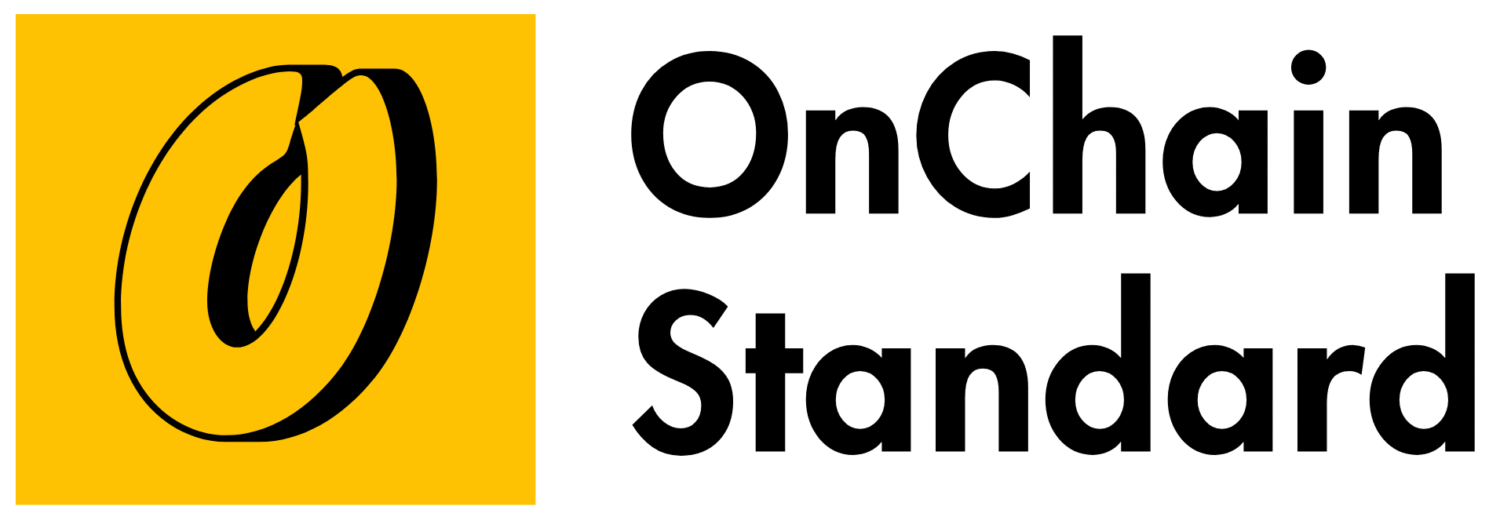How to Track Whale Wallets and Big Moves in Crypto Markets in 2025
Introduction
In the $3 trillion cryptocurrency market of 2025, “whales”—individuals or entities holding large amounts of crypto—can significantly influence prices through their trades. For example, a single whale transaction of $3.6 million in Bitcoin in 2024 triggered a 5% price swing. Tracking whale wallets and big moves provides insights into market trends, liquidity shifts, and potential opportunities, helping traders stay ahead. This educational guide explains how to identify and monitor whale activity using blockchain tools, analytics platforms, and practical strategies, with examples to navigate the volatile crypto landscape.
What Are Crypto Whales?
Crypto whales are investors or institutions holding substantial amounts of a cryptocurrency, often enough to impact market prices. While no universal threshold exists, whales typically own:
-
Bitcoin (BTC): 1,000+ BTC ($80 million at $80,000/BTC in 2025).
-
Ethereum (ETH): 10,000+ ETH ($35 million at $3,500/ETH).
-
Altcoins: 1–5% of a token’s circulating supply, especially for smaller market cap coins (<$1 billion).
Examples: MicroStrategy (200,000+ BTC, ~$16 billion), Justin Sun (TRON founder, millions in TRX), or anonymous wallets identified via blockchain explorers.
Why They Matter: Whale trades can cause price volatility, signal market sentiment, or indicate insider knowledge. In 2024, whale activity drove $500 million in DeFi price shifts, highlighting their influence.
Why Track Whale Wallets?
-
Market Signals: Large buys may signal bullish sentiment, while transfers to exchanges often precede sell-offs. For example, a Shiba Inu whale sold 250 billion SHIB ($6 million) in 2024, causing a 10% price drop.
-
Liquidity Insights: Whales holding large token supplies reduce circulating supply, increasing scarcity and price potential.
-
Early Opportunities: Tracking whales can reveal investments in new tokens or DeFi projects before mainstream adoption, as seen with early Solana whale buys in 2020.
-
Risk Management: Monitoring whale sell-offs helps traders avoid losses during sudden dumps, critical in a market with 20–50% volatility.
Tools for Tracking Whale Wallets
Blockchain transparency enables real-time tracking of whale activity. Below are the top tools in 2025 for monitoring wallets and large transactions:
1. Whale Alert
-
Overview: Tracks large transactions across 100+ blockchains (e.g., Bitcoin, Ethereum, Solana) with real-time alerts.
-
Features: Notifications for transfers over $1 million, HODL time metrics, and profit/loss ratios. Free 7-day trial; paid plans start at $19.99/month.
-
Best For: Beginners seeking simple alerts via Telegram, X, or email.
-
Example: Alerts for a $10 million BTC transfer from a cold wallet to Binance, signaling a potential sell-off.
2. Nansen
-
Overview: Advanced analytics platform for tracking whale wallets, token inflows/outflows, and NFT trends across Ethereum, Solana, and more.
-
Features: Smart Money tracking (profitable wallets), wallet labeling, and real-time alerts via Telegram/Discord. Free tier; premium plans start at $99/month.
-
Best For: Traders analyzing high-performing wallets and DeFi trends.
-
Example: Identifies a wallet with a 5x return on PEPE trades, revealing new token investments.
3. Arkham Intelligence
-
Overview: Blockchain intelligence platform with labeled whale wallets (e.g., Vitalik Buterin’s) and transaction analytics.
-
Features: Custom dashboards, historical wallet performance, and multi-chain tracking. Free tier; paid plans from $50/month.
-
Best For: Detailed forensic analysis of whale strategies.
-
Example: Tracks Vitalik’s ETH wallet for large transfers to DeFi protocols like AAVE.
4. Cryptocurrency Alerting
-
Overview: Monitors 32,000+ coins across 48 exchanges, with alerts for whale trades, volume spikes, and ETH gas fees.
-
Features: Multi-channel notifications (email, SMS, Telegram, Discord). Free for 3 alerts; paid plans from $3.99/month.
-
Best For: Multi-market traders needing customizable alerts.
-
Example: Alerts for a $5 million SOL transfer to a cold wallet, indicating long-term holding.
5. Etherscan/Solscan/BscScan
-
Overview: Blockchain explorers for Ethereum, Solana, and BNB Chain, showing wallet balances, transaction histories, and token distributions.
-
Features: Free, public access to wallet addresses, transaction volumes, and smart contract interactions.
-
Best For: Manual analysis of specific wallet activity.
-
Example: Tracks a wallet holding 2% of UNI’s supply for unusual transfers.
6. DexCheck
-
Overview: Focuses on DeFi whale activity, tracking large trades on decentralized exchanges like Uniswap.
-
Features: Identifies top-performing traders, real-time trade alerts, and token analytics. Free tier; Pro plan requires DCK token.
-
Best For: DeFi traders monitoring decentralized exchange activity.
-
Example: Flags a $2 million UNI buy on Uniswap, signaling whale accumulation.
7. Whalemap
-
Overview: Tracks Bitcoin and altcoin whale activity with metrics like HODL waves and address waves.
-
Features: Visualizes large inflows/outflows and wallet movements. Free tier; paid plans from $40/month.
-
Best For: Traders using on-chain data beyond price action.
-
Example: Shows a surge in BTC wallet inflows, predicting a potential sell-off.
Step-by-Step Guide to Tracking Whale Wallets
1. Identify Whale Wallets
-
Use Blockchain Explorers: Search Etherscan, Solscan, or BscScan for wallets holding large balances (e.g., >1,000 BTC or 10,000 ETH). Check token distribution to find top holders.
-
Leverage Analytics Platforms: Use Nansen or Arkham to identify labeled wallets (e.g., exchanges, institutions) or Smart Money wallets with profitable histories.
-
Monitor Public Figures: Track known whales like Justin Sun or MicroStrategy via public disclosures or Arkham’s labeled wallets.
Example: On Etherscan, search a token’s contract address (e.g., UNI) to view top holders. A wallet with 1 million UNI ($8 million) is a potential whale.
2. Set Up Alerts for Large Transactions
-
Whale Alert: Configure Telegram or email alerts for transactions above $1 million on BTC, ETH, or SOL.
-
Nansen: Set Smart Money alerts for specific wallets or tokens via Telegram/Discord.
-
Cryptocurrency Alerting: Create alerts for volume spikes or whale transfers on Ethereum or BNB Chain, delivered via SMS or Discord.
-
TradingView: Set price or volume alerts for whale-driven price spikes, paired with RSI or MACD indicators.
Example: Set a Whale Alert for BTC transfers >$5 million to Kraken, indicating a potential sell-off.
3. Analyze Transaction Patterns
-
Exchange Flows: Transfers to exchanges (e.g., Binance, Coinbase) often signal sales (bearish), while moves to cold wallets suggest holding (bullish).
-
Transaction Volume: High-frequency large trades (e.g., $2 million ETH buys) indicate accumulation. Use DexCheck for DeFi trades.
-
HODL Metrics: Whalemap’s HODL waves show if long-term holders are selling, signaling market shifts.
-
Token Distribution: Check if a whale holds >5% of a token’s supply, increasing their influence (via Token Sniffer or Etherscan).
Example: A $10 million USDT transfer to Binance, flagged by Cryptocurrency Alerting, suggests a whale preparing to buy or sell.
4. Interpret Market Impact
-
Bullish Signals: Large buys or transfers to cold wallets, especially during dips, suggest confidence. Example: A 2024 Bitcoin whale bought 100 BTC at $60,000, sparking a 10% rally.
-
Bearish Signals: Transfers to exchanges or large sell-offs, like the 2024 SHIB dump, indicate potential price drops.
-
Neutral Signals: Internal exchange transfers (e.g., cold to hot wallet) or security moves may not impact prices.
Tip: Cross-reference with CoinGecko for market sentiment and Token Sniffer for scam checks to avoid misinterpreting signals.
5. Act on Insights
-
Trading Decisions: Use whale buys as entry points or sells as exit signals, but confirm with technical analysis (e.g., RSI > 70 for overbought).
-
Portfolio Management: Adjust allocations based on whale trends, like increasing SOL exposure after whale accumulation.
-
Risk Mitigation: Set stop-losses if a whale’s sell-off triggers a dip, protecting against 20–30% price swings.
Example: After a Nansen alert shows a whale buying 10,000 SOL ($1.5 million), you buy 10 SOL at $150, anticipating a rally, and set a stop-loss at $135.
Tips for Effective Whale Tracking
-
Focus on Smart Money: Prioritize wallets with profitable histories (e.g., 80%+ win rate) using Nansen or Arkham, as not all whales are successful.
-
Use Multiple Tools: Combine Whale Alert for real-time notifications, Etherscan for manual checks, and Nansen for Smart Money insights.
-
Monitor DeFi Activity: Track whale trades on Uniswap or AAVE via DexCheck, as DeFi moves drove $500 billion in TVL in 2025.
-
Avoid Misleading Signals: Ignore internal exchange transfers or security moves. Verify with Etherscan’s transaction details.
-
Set Notification Preferences: Use Telegram or Discord for instant alerts; emails may lag by 1–5 minutes.
-
Combine with Other Analysis: Pair whale tracking with technical indicators (TradingView) and fundamental research (CoinGecko) to avoid manipulation traps.
-
Stay Secure: Use 2FA (e.g., YubiKey) on tracking platforms and avoid sharing wallet details on public forums like Telegram.
Practical Examples
-
Bitcoin Sell-Off Alert
-
Scenario: Track BTC for potential dumps.
-
Tool: Whale Alert.
-
Setup: Set a Telegram alert for BTC transfers >$5 million to Binance.
-
Outcome: A $10 million transfer triggers an alert, prompting you to sell 0.1 BTC at $80,000 before a 5% dip.
-
-
Ethereum Whale Accumulation
-
Scenario: Identify ETH whale buys during a dip.
-
Tool: Nansen.
-
Setup: Alert for Smart Money wallets buying >1,000 ETH ($3.5 million) via Telegram.
-
Outcome: A whale buys 2,000 ETH at $3,200; you buy 1 ETH, riding a 10% rally.
-
-
Solana DeFi Opportunity
-
Scenario: Monitor SOL whale activity on Uniswap.
-
Tool: DexCheck.
-
Setup: Set a Discord alert for SOL trades >$1 million on decentralized exchanges.
-
Outcome: A $2 million SOL buy signals DeFi interest; you invest $1,000 in a Solana protocol, gaining 15%.
-
-
New Token Discovery
-
Scenario: Find whales investing in new tokens.
-
Tool: Arkham Intelligence.
-
Setup: Track a labeled whale wallet (e.g., Justin Sun’s) for new token buys.
-
Outcome: A $1 million TRX whale buy in a new DeFi token prompts you to research and invest early, yielding a 3x return.
-
Challenges and Considerations
-
Misleading Signals: Not all large transfers indicate buys or sells; some are internal moves or security measures. Verify with Etherscan.
-
Market Manipulation: Whales may create false signals (e.g., fake sell-offs) to trap retail traders. Cross-check with Token Sniffer.
-
Learning Curve: Tools like Nansen and Arkham require familiarity with on-chain analytics, challenging for beginners.
-
Costs: Premium features (e.g., Nansen’s $99/month, Cryptocurrency Alerting’s $3.99/month) may be costly for small traders.
-
Volatility Risks: Whale moves can amplify 20–50% price swings, requiring stop-losses and diversified portfolios.
-
Privacy Limitations: While blockchain is transparent, anonymous wallets obscure true intentions, complicating analysis.
Conclusion
Tracking whale wallets and big moves in 2025’s $3 trillion crypto market offers traders valuable insights into price trends and opportunities. Tools like Whale Alert, Nansen, Arkham Intelligence, and Etherscan enable real-time monitoring of large transactions, wallet balances, and DeFi activity. By setting strategic alerts, analyzing patterns, and combining insights with technical and fundamental analysis, traders can make informed decisions. However, success requires caution—verify signals, avoid manipulation traps, and secure accounts with 2FA. With these strategies, you can leverage whale tracking to navigate the crypto market’s volatility and capitalize on emerging trends.




